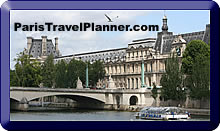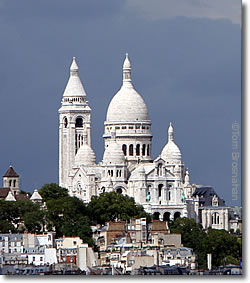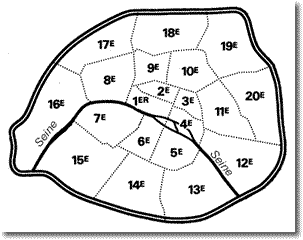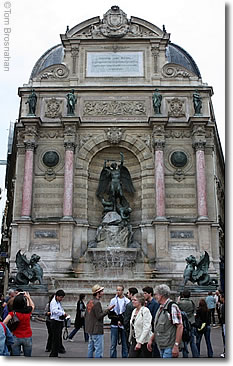 |
Finding Your Way Around Paris | |
| Tom prefers landmarks and Métro stations, Jane likes the traditional Paris arrondissements, but all of these can help you find your way around Paris. | ||
|
Booking.com
|
|
Paris is a city of landmarks: the River Seine, Eiffel Tower, Notre Dame de Paris, Arc de Triomphe, Place de la Concorde, Les Invalides...great towers and domes, plazas and avenues. With a little study you'll be able to find your way around this huge, sprawling city with a minimum of confusion. Here are some maps of Paris. LandmarksFinding your way around Paris is easier if you are familiar with at least some of these landmarks. You'll see them from the many places in Paris from which you can enjoy panoramic views of the city: the Eiffel Tower, Arc de Triomphe, Sacré-Coeur and more. You'll also see some of these monuments as you look down avenues and streets, or across open spaces. In terms of transportation from one place to another, and finding a place you want to go, Métro stations are the way. With over 300 stations, there is sure to be a Métro station near your destination. In each station is a detailed Plan du Quartier (neighborhood map) showing not only streets, but also significant buildings, with their names. Study the Plan du Quartier before you leave the Métro station and you'll be on your way straight to your destination. More... ArrondissementsWe'll always tell you the arrondissement (district or "borough") but we don't want you to have to learn a boring governmental system just to get around. More... Changing Street NamesNote that many Paris streets change names as they make their way through the city. (For example, the avenue that is named rue de Rivoli on the west side of the Saint-Paul Métro station is named rue Saint-Antoine on the east side of the station—same street.) If you come to a street corner and don't see the street name you expect, look on the opposite corner. Here are some landmarks and districts you should know: Right BankIf you're cruising downstream in a boat on the River Seine, the right (north) bank of the river in the middle of the city is where you find the Louvre Museum, the Jardin des Tuileries, Avenue des Champs-Elysées, the Opéra Garnier, the classy boutiques along the rue du Faubourg St-Honoré, and, in general, the traditionally higher-status part of town. Left BankOn the left (south) bank are Place St-Michel, the Église de St-Germain-des-Prés, the Panthéon, University of Paris (Sorbonne), the Latin Quarter, and much of the city's student lifestyle. More... Latin QuarterThe area around the University of Paris (La Sorbonne) where Latin was spoken in medieval times. More... Place Saint-MichelThe center of Left Bank life, where boulevard Saint-Michel meets the Seine, and everyone meets in front of the fountain. Lots of inexpensive restaurants nearby! More... Île de la CitéJust north of Place Saint-Michel, the larger of the two islands in the Seine in the middle of Paris, it holds the Cathedrale de Notre-Dame, Sainte Chapelle and Conciergerie. More... Île Saint-LouisSmaller of the islands, a charming, quiet residential neighborhood with some good restaurants, cafés and shops. More... Île-de-FranceNot an island at all—the region around Paris. More... Place de la ConcordeGrand square at the eastern end of the avenue des Champs-Élysées and western end of the Jardin des Tuileries. More... Place Charles de Gaulle-ÉtoileBroad plaza at the western end of the avenue des Champs-Élysées, with the Arc de Triomphe at its center. More... Place de la BastilleBroad plaza where the Bastille prison once stood, now with a monumental column at its center and the modern Paris Opéra to one side. More... Le MaraisOnce a swamp, then (and still) the Jewish quarter, the district east of the Hôtel de Ville with narrow streets, little shops and cafés, lively nightlife, artists and the gay community. More... MontmartreThe hill topped by the iconic basilique du Sacré-Coeur, with artist-filled Place du Tertre and, at the bottom of the hill, the nightclub and sex-shop district around Place Pigalle. More...
|
|
Above, Basilique
du Sacré-Coeur atop Montmartre, visible
throughout Paris.
|






